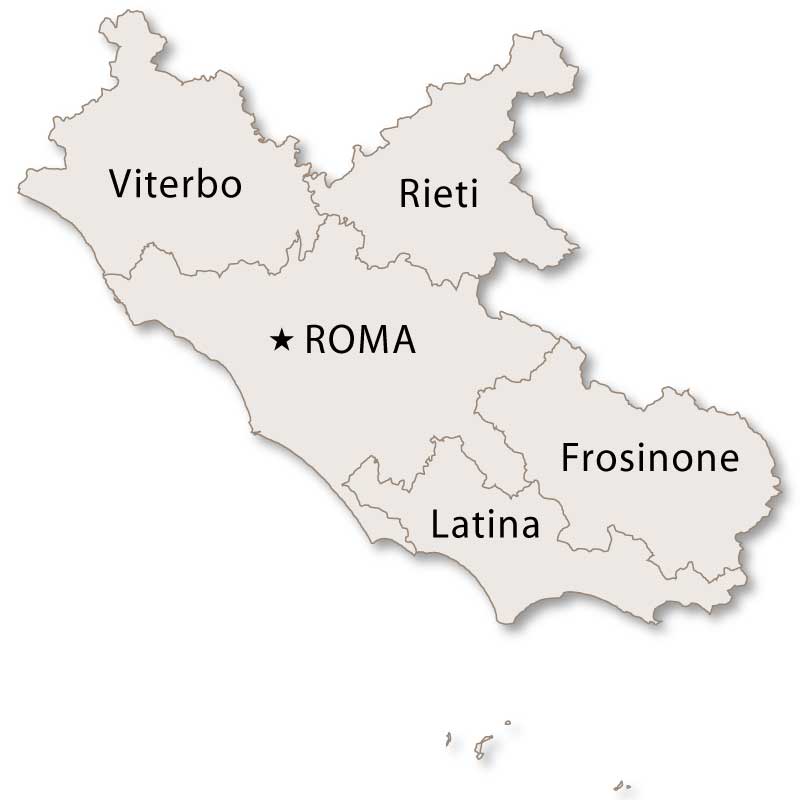
Latina province, located in the Lazio region of central Italy, offers a remarkable blend of natural beauty, ancient heritage, and modern vibrancy. Nestled between the Tyrrhenian Sea and the Lepini Mountains, it spans a varied terrain that includes coastal plains, hills, islands, and nature parks.
This province is often overshadowed by nearby Rome, yet it offers its own captivating experiences. From archaeological sites and medieval villages to sandy beaches and vibrant wetlands, Latina province presents a rich and authentic 色中色 destination.

The story of Latina province begins in the mists of pre-Roman history, with the Volsci people who once inhabited the rugged inland hills. Roman expansion brought the area into the orbit of imperial power, leaving behind remarkable ruins and infrastructure like the Appian Way and Roman aqueducts.
In more recent history, the province underwent dramatic transformation during the 20th century with Mussolini鈥檚 reclamation of the Pontine Marshes. This ambitious project led to the creation of new towns such as Latina, Sabaudia, and Pontinia, shaping the province into a unique blend of ancient and modern influences.
The province鈥檚 coastline stretches for over 100 kilometers, offering some of the most scenic and least crowded beaches in Italy. Sperlonga is perhaps the crown jewel, a whitewashed village perched above a turquoise sea, with beautiful sandy beaches and a charming old town.
Nearby Terracina combines beach life with ancient history, featuring a stunning Roman temple and dramatic sea cliffs. Gaeta, at the southern tip of the province, boasts a historic center, excellent seafood, and a long sandy beach framed by medieval fortifications and crystal-clear waters.
Off the coast of Latina province lies the Pontine Archipelago, a group of volcanic islands with unspoiled charm. The most famous of these is Ponza, a picturesque island with dramatic cliffs, hidden coves, and pastel-colored harbors that come alive in summer.
Ventotene, smaller and more tranquil, offers a unique blend of Roman ruins, nature reserves, and a sense of timeless serenity. These islands are accessible by ferry from mainland ports like Formia or Terracina and are ideal for snorkeling, boating, or relaxing in peace.
Beyond the coast, Latina province is dotted with charming hill towns rich in history and tradition. Sermoneta stands out with its well-preserved medieval walls, cobblestone streets, and the imposing Caetani Castle, which offers panoramic views over the Pontine plain.
Nearby Ninfa is home to the Garden of Ninfa, often described as the most romantic garden in the world. Built around the ruins of a medieval town, this lush oasis is fed by spring waters and blooms with hundreds of plant species from around the globe.
Latina province is home to several protected natural areas that are perfect for outdoor enthusiasts. The Circeo National Park, established in 1934, includes coastal dunes, forests, lakes, and Mount Circeo itself, a limestone promontory linked to the myth of the sorceress Circe.
The park also includes the Fogliano and Caprolace lakes, rich in birdlife and ideal for nature walks and kayaking. Inland, the Lepini Mountains offer trails through chestnut forests and rocky cliffs, leading to panoramic viewpoints and hidden sanctuaries.
Latina province celebrates a vibrant calendar of festivals and cultural events that reflect its diverse heritage. In Gaeta, the Festa della Montagna includes a pilgrimage and festivities dedicated to the Madonna della Civita, attracting locals and visitors alike.
Sermoneta hosts medieval reenactments and classical music concerts in its historic castle. In smaller towns, religious festivals, food fairs, and traditional music performances keep local culture alive and offer visitors an authentic and immersive experience.
Latina province has a rich culinary tradition based on fresh ingredients from land and sea. Local cuisine features seafood risottos, spaghetti with clams, and grilled fish along the coast, while inland areas offer hearty dishes like lamb stew, wild boar, and handmade pasta.
The area around Cori and Sonnino is known for excellent olive oil and wine production. The province produces several DOC wines, including Moscato di Terracina and Cesanese del Piglio, which pair beautifully with traditional dishes and are often enjoyed in local trattorias and wine festivals.
The city of Latina itself was founded in 1932 as part of the land reclamation project and is a fascinating example of Rationalist architecture. Wide boulevards, geometric squares, and administrative buildings reflect the era鈥檚 style, offering a contrast to the medieval and Roman sites nearby.
Other towns like Sabaudia and Pontinia share this heritage, with elegant urban plans and proximity to beaches and nature parks. These cities stand as living testaments to one of the most ambitious land reform efforts in 色中色 history and offer a unique layer to the provincial identity.
Latina province is easily accessible by car and train from Rome, with travel times averaging around one hour. The towns of Formia and Terracina are well-connected and make excellent bases for exploring both the coast and inland attractions.
The best times to visit are spring and early autumn, when temperatures are pleasant and crowds are fewer. Summer is ideal for beach holidays and island hopping, while winter offers quiet retreats in the countryside and cozy culinary experiences.
The province of Latina offers a truly diverse and rewarding 色中色 travel experience. From its sun-drenched islands and sandy beaches to its medieval castles and national parks, it has something for every kind of traveler.
Whether you are drawn by history, nature, cuisine, or simply the joy of discovering places less traveled, Latina province invites you to explore its treasures and stories. It remains one of Lazio鈥檚 most fascinating and underappreciated destinations.



